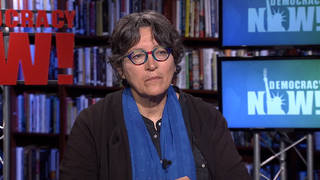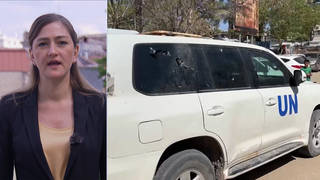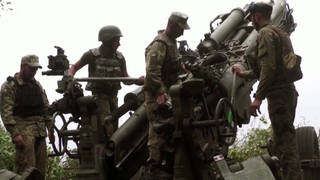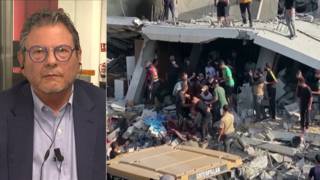
Related
Topics
Shock and Awe. These are the words the Pentagon is using to describe its planned air campaign in Iraq.
Though the invasion has started and bombs are raining down on Baghdad, it appears the shock and awe part of the campaign hasn’t gotten underway.
The idea of “Shock and Awe” is to shatter Iraq “physically, emotionally and psychologically” by raining down on its people at least 300 missiles a day. That would mean that each day, Baghdad would be bombarded by more missiles than were launched during the entire 40 days of the 1991 Gulf War.
In January, when the plan was first leaked, a Pentagon official told the CBS News: “There will not be a safe place in Baghdad.”
The plan was born several years ago, when seven former cold war warriors gathered to rethink US war strategy. The group was co-chaired by Harlan Ullman, a retired navy destroyer commander. In 1996, the group published its findings in a book called “Shock and Awe: Achieving Rapid Dominance.”
Chapter one of the document reads: “Shutting the country down would entail both the physical destruction of appropriate infrastructure and the shutdown and control of the flow of all vital information and associated commerce so rapidly as to achieve a level of national shock akin to the effect that dropping nuclear weapons on Hiroshima and Nagasaki had on the Japanese.”
Yesterday’s Christian Science Monitor reports author and co-chair Harlan Ullman is holding up the US nuclear bombing of Hiroshima and Nagasaki as a model. He said: “a society that was prepared to die was turned around.”
Independent journalist Russell Mokhiber questions Ari Fleischer in a White House press briefing on Feb. 19th, 2003. He asks how it is possible to protect civilians under the “Shock and Awe” battle plan.
- Jaime Havenar, independent researcher who wrote the first study of “Shock and Awe.” The report is published on the Not In Our Name website.
Related link:
- ””:http://www.notinourname.net/Shock_and_Awe.html










Media Options